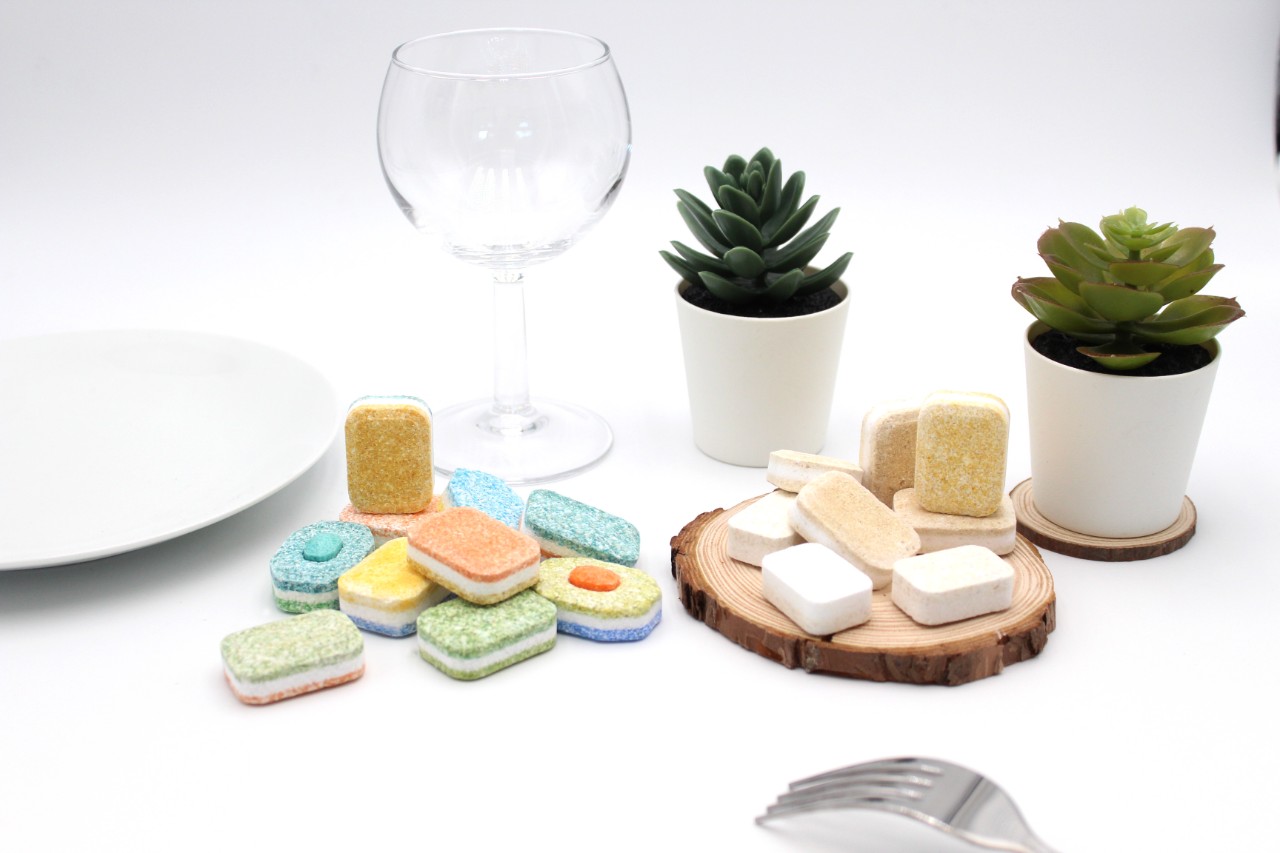What Are Cleaning Tablets?
With the widespread adoption of environmental awareness and the acceleration of daily life, more and more households and businesses are paying attention to the eco-friendliness and convenience of cleaning products. As an innovative cleaning solution, cleaning tablets are gradually entering our lives due to their high efficiency, environmental benefits, and portability. So, what exactly are cleaning tablets? What are their ingredients? Why are they increasingly popular? This article will provide you with a detailed introduction to the basics and advantages of cleaning tablets.
What Are Cleaning Tablets?
Cleaning tablets are solid cleaning products, usually in tablet form, that dissolve quickly and release active cleaning ingredients. Their name comes from the “effervescent” phenomenon — when the tablet is placed in water, it rapidly produces a large number of bubbles, releasing active cleaning substances to achieve cleaning effects.
Compared to traditional liquid cleaners, cleaning tablets are more convenient for storage and transportation because they are compact and lightweight, reducing plastic packaging usage and shipping costs. In addition, these tablets often use environmentally friendly formulas that minimize environmental impact.
Main Ingredients of Cleaning Tablets
The formulation of cleaning tablets varies depending on their purpose, but they generally include the following key components:
-
Surfactants
Surfactants are the most important cleaning agents. They reduce the surface tension of water, making it easier for water molecules to penetrate stains and remove dirt. Common surfactants include anionic, nonionic, and amphoteric types. -
Effervescent Agents (Bicarbonates)
Effervescent agents are the key components that produce bubbles, usually consisting of sodium bicarbonate (baking soda) and citric acid. When dissolved in water, they react to release carbon dioxide gas, helping the cleaner dissolve and disperse quickly. -
Additives and Enzymes
Depending on cleaning needs, tablets may include additives such as enzymes (protease, lipase, etc.) that help break down stubborn stains like grease and protein, improving cleaning efficiency. -
Fragrances and Optical Brighteners
To enhance user experience, fragrances are added to leave a fresh scent after cleaning. Optical brighteners help enhance the whiteness and brightness of fabrics or surfaces. -
Stabilizers and Controlled-Release Agents
These ingredients help maintain the tablet’s stability, preventing moisture absorption or premature reaction, ensuring a longer shelf life.
Advantages of Cleaning Tablets
-
Eco-friendly and Energy-saving
Cleaning tablets are compact, which reduces carbon emissions during transportation. Their solid form greatly decreases the use of plastic bottles and packaging, easing environmental burden. Many tablets are made with biodegradable formulas friendly to water bodies and ecosystems. -
Convenient to Use
Users only need to drop one tablet into an appropriate amount of water and wait for it to dissolve completely before use. Compared to traditional liquid cleaners, there is no need for measuring or pouring, reducing waste and misuse. Their portability makes them ideal for travel, office, or outdoor use. -
Highly Effective Cleaning
Formulations combine enzymes and surfactants to quickly break down grease, stains, and odors, ensuring excellent cleaning performance. -
Safe Formulation
Modern cleaning tablets increasingly avoid harmful substances like phosphates and chlorine, making them safe for households, especially those with children and pets. -
Multi-purpose Applications
These tablets are not only suitable for laundry but also effective for kitchen, bathroom, glass, and floor cleaning, meeting diverse needs in homes and commercial spaces.
Future Trends in Cleaning Tablets
With stricter environmental regulations and growing consumer awareness, the market potential for cleaning tablets is huge. Future tablets will focus more on innovative formulations, improving biodegradability and multifunctionality. Packaging designs will trend toward sustainability and smart features.
Moreover, with the growth of e-commerce and cross-border trade, cleaning tablets are favored by international brands and consumers for their lightweight and easy shipping advantages.
Conclusion
As an environmentally friendly and efficient new type of cleaning product, cleaning tablets are gradually changing traditional household and commercial cleaning methods. Understanding their ingredients and benefits helps consumers make informed choices and provides brands with direction to develop eco-friendly cleaning markets.

